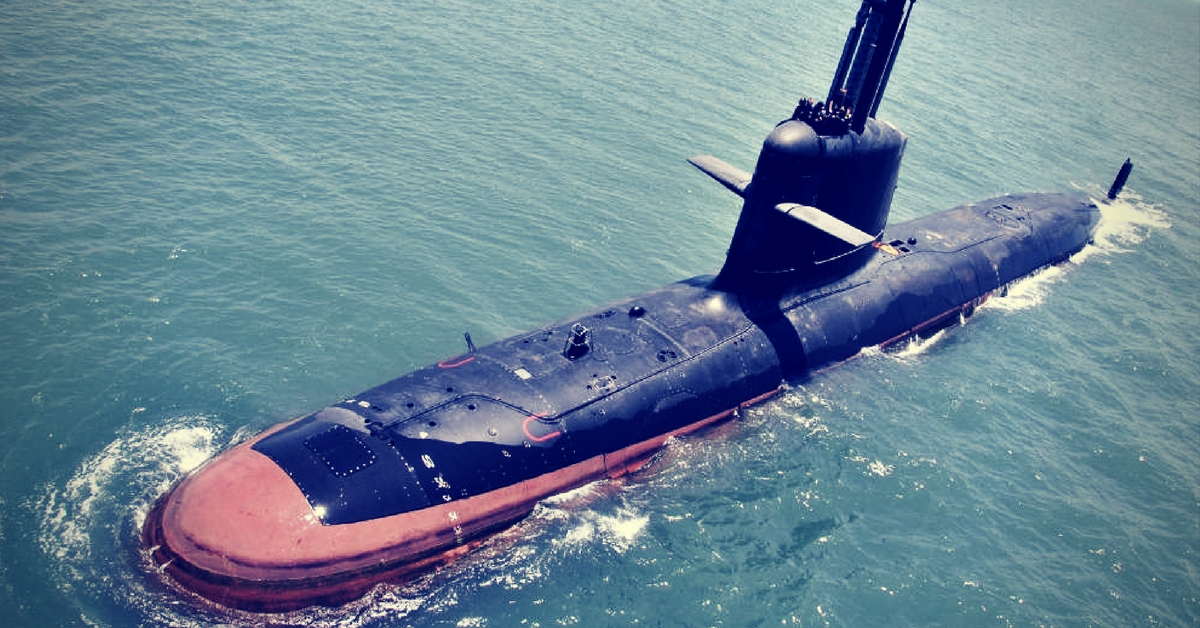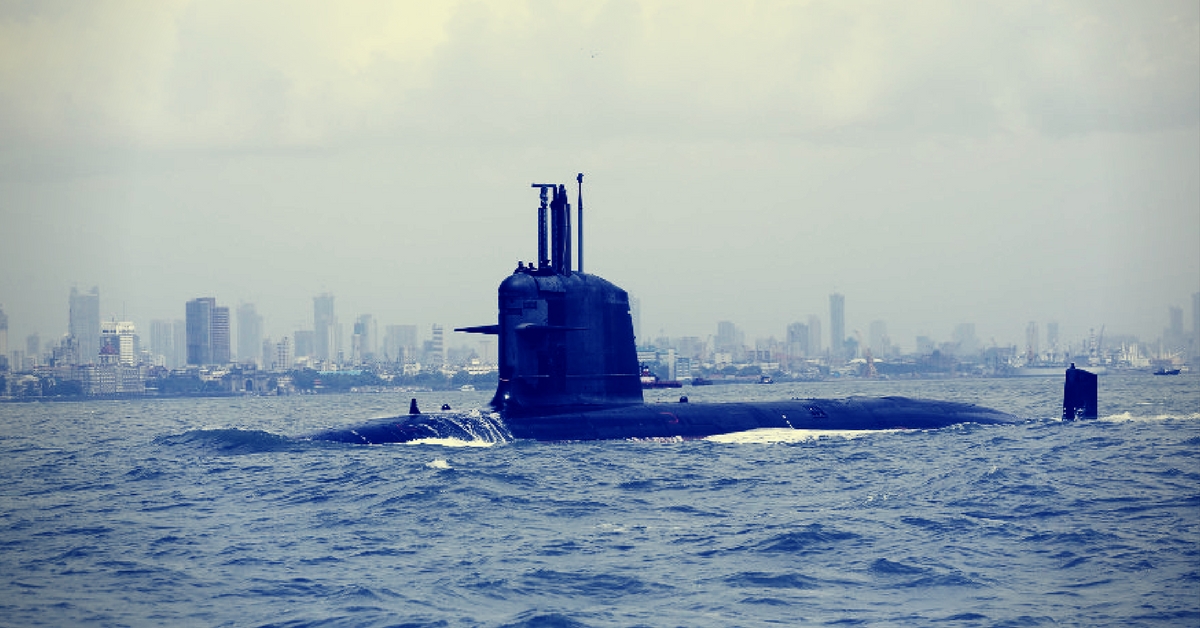India began building submarines in the early-80’s alongside countries like China, South Korea, and Australia when it struck a deal for six HDW submarines with a German company. Four of these submarines were supposed to be built in India.
Scams and misfortune caused the project to stall, and by the 90’s, India’s submarine-building programme stopped. Now, the Navy is finally rolling out a Scorpene-class sub, the first of six, all indigenously built.
Named ‘Kalvari’, after a deep-sea tiger shark, this submarine shares its name with the first-ever Indian submarine commissioned in 1967 and decommissioned in 1996.

The six submarines will be equipped with anti-ship missiles and long-range guided torpedoes with a modern sensor suite.
So what connects the two Kalvaris?
Apart from the name, the submarines have nothing in common.
The INS Kalvari S23 was a Foxtrot-class model, a diesel-electric patrol submarine. It was an old design and had issues because a lot of deck space was taken up by batteries. Despite having a high underwater endurance, the extra battery weight allowed it an average speed of a slow 2 knots.
The INS Kalvari S50 is a Scorpene-class diesel-electric attack submarine. The Indian Navy in 2005 ordered 6 of them, all to be built in India, at the Mazagon Docks or elsewhere.
Two of the Indian submarines will feature a DRDO-developed Air Independent Propulsion system. The state-of-the-art submarines will have around 39 anti-ship missiles, and torpedoes.
A submarine is a cheap platform to maintain, vis-a-vis other naval ships, Vice Admiral PK Chatterjee (retd), former commander-in-chief, Andaman and Nicobar Command, told the Times of India.
Invited to speak in Visakhapatnam for the 50 years celebrations of the Navy’s submarine wing, he said that submarines could be game-changers in conflicts, adding, “Unknown to most, during the Kargil War, we had four Sindhughoshs and four Shishumars operational on the western seaboard. With these, we ensured that our presence was maintained constantly and poised strategically from May 25 to December 8, 1999.”
The new Kalvari has a superior stealth-technology and is capable of launching attacks using precision-guided weapons, laying mines, surveillance, anti-submarine warfare and intelligence gathering.
According to Admiral Chatterjee, building the INS Arihant paved the way for the future. The considerable investment seemed burdensome, but it was necessary to carry on with the nuclear submarine programme.
You may also like: Operation Trident,1971: How Indian Navy Pulled Off One Of Its Greatest Victories
The advanced submarine is sure to aid the Navy in its many missions. A senior Navy official told the Economic Times that the submarine could increase India’s maritime prowess, adding that, “The state-of-the-art technology utilised in the Scorpene has ensured superior stealth features such as advanced acoustic silencing techniques, low radiated noise levels, hydro-dynamically optimised shape and the ability to launch a crippling attack on the enemy using precision-guided weapons.”
Like this story? Or have something to share? Write to us: contact@thebetterindia.com, or connect with us on Facebook and Twitter.
NEW: Click here to get positive news on WhatsApp!
If you found our stories insightful, informative, or even just enjoyable, we invite you to consider making a voluntary payment to support the work we do at The Better India. Your contribution helps us continue producing quality content that educates, inspires, and drives positive change.
Choose one of the payment options below for your contribution-
By paying for the stories you value, you directly contribute to sustaining our efforts focused on making a difference in the world. Together, let's ensure that impactful stories continue to be told and shared, enriching lives and communities alike.
Thank you for your support. Here are some frequently asked questions you might find helpful to know why you are contributing?

